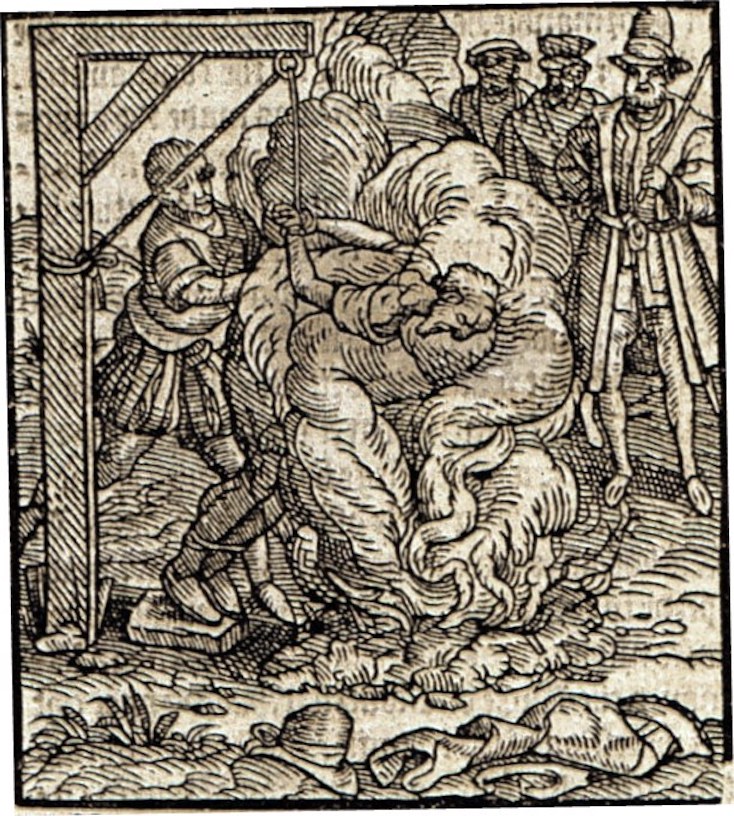Guest Post: John Paul Davis – Escapes from the Tower of London: Sir John Oldcastle, the man behind the ‘staff
Of all the unfortunate souls destined to suffer inside the Tower of London, there is none stranger than a man whose story commenced around the year 1409. Famed since the late 16th-century as the inspiration for William Shakespeare’s Falstaff, the historical Sir John Oldcastle, in truth, had little in common with the comical character. A mild-mannered, hardworking and courageous knight, Oldcastle’s life was destined not for comedy but tragedy.

Born sometime after 1360 in Herefordshire, John was the son of Richard Oldcastle, and served Henry IV loyally during the campaigns against the Scots and the Welsh. After moving up the social scale with his marriage to Baroness Cobham, in 1408 his life took a surprising turn when he fell under the influence of the new wave of religious enlightenment, known as ‘Lollardy’.
Exactly what the preachers of the ‘new light’ hoped to achieve is now difficult to determine. While the term ‘Lollards’ derived from an insulting Dutch term for mumbling that was later viewed as one of endearment, the group itself followed the teachings of English reformer John Wycliffe, a staunch critic of the rising corruption of the Church, who preached lovingly of the need to help the poor. As a consequence of his preaching, Wycliffe was soon denounced as a heretic.
Inevitably, Oldcastle’s affiliation with this group spelled trouble. His property was placed under interdict by the papacy in 1410 after churches on his land had welcomed the non-clerical preachers; eyebrows were also raised on hearing he put them up in his castle. On learning from the archbishop of Canterbury that Oldcastle was being accused of heresy, the newly crowned Henry V, a friend of John in their youth, invited him to Windsor. When questioned on the matter, Oldcastle replied that while he would always be loyal to the crown, the undertakings of his soul were a private matter.
Sadly for Oldcastle, his views, though arguably somewhat enlightened for the time, were effectively a death warrant. When accusations were brought forward that a heretical book that Oldcastle had once owned appeared for sale among the booksellers of St Paul’s Churchyard, he was officially charged on crimes of heresy and sent to the Tower. During his stay, attempts by those of the religious life to steer him from his beliefs failed. In September 1413, Oldcastle was ferried along the Thames to Ludgate Hill where he faced trial in a church court. Expressing views that would one day inspire protestant reformers, he declared his belief in the sacraments, but not religious images or the real presence of Christ in Holy Communion. When sentenced to be burned at the stake, Oldcastle replied that while physical harm could be done to his body, the same could never be true of his soul.
The king, on learning of these developments, was devastated. Hoping that Oldcastle would recant, a stay of execution was ordered. Countering claims among the Church that he had done so, a rebuttal of this was smuggled out of the Tower on Oldcastle’s behalf and circulated throughout the city. Then, aided by his Lollard supporters, Oldcastle escaped from the Tower.
The scene was set for open rebellion. In league with the same helpers who had plotted his escape, Oldcastle devised a plan to seize the king and his brothers during an epiphany play and replace the current governorship with some form of commonwealth, with himself to act as regent. On hearing this, Henry closed the gates of the city and announced a mini crusade against the Lollards. Amidst the scenes of carnage, Oldcastle, for the second time, managed to evade the king’s clutches.
Four years of avoiding recapture followed until one fateful night in November 1417, while hiding out in a Welsh backwater, a meeting with a local noble brought about his downfall. He was returned to the Tower and, being charged as both a heretic and traitor, condemned to death. In a scene unique in its cruelty, Oldcastle died by the noose over a burning pyre at St Giles’ Fields. Ironically the setting of his failed uprising.

A Hidden History of the Tower of London is available to purchase here.
Read more in the History Hit article The 5 Most Daring Escapes from the Tower of London by J0hn Paul Davis.

